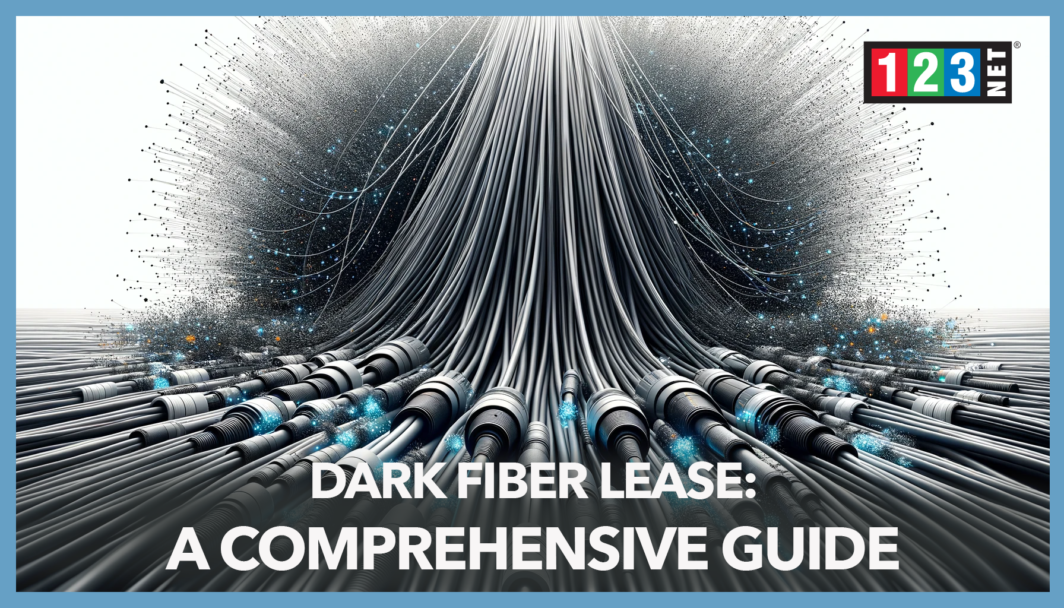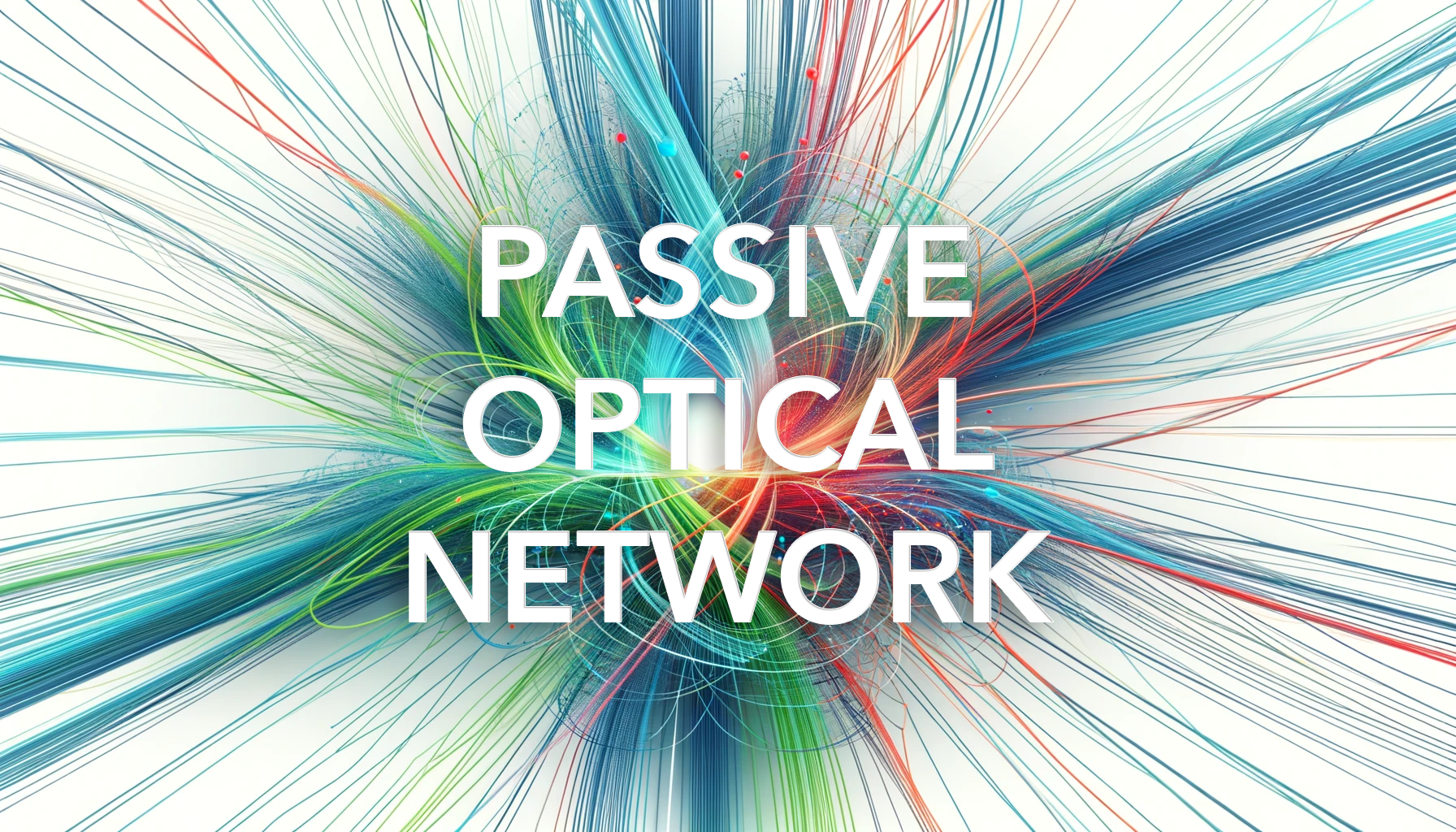
Introduction
Dark fiber refers to unused optical fiber cables laid underground or aboveground, not currently in service. These fibers are termed “dark” because they are unlit, meaning no data is being transmitted through them. In modern telecommunications, dark fiber is significant because it represents potential for expanding network capacity without the need for new infrastructure investments. Dark fiber leasing allows businesses and service providers to utilize these existing cables, enhancing their network capabilities.
Dark fiber leasing involves renting unused fiber optic cables from network owners, providing an affordable and efficient way to expand network infrastructure. This practice is increasingly important for businesses needing high-bandwidth connectivity, low latency, and greater control over their networks. By leasing dark fiber, organizations can scale their operations, improve network performance, and maintain security standards without the significant costs associated with laying new fiber.
Understanding Dark Fiber
Dark fiber, essentially, is optical fiber infrastructure that has been installed but is not currently active or transmitting data. The difference between dark fiber and lit fiber lies in their usage: lit fiber is already in use, carrying data signals, while dark fiber remains inactive until leased and lit by the user.
Dark fiber is particularly valuable for businesses requiring extensive data transmission capabilities. Industries such as telecommunications, data centers, cloud service providers, and research organizations leverage dark fiber to ensure robust and scalable network infrastructure. Its primary use cases include creating private networks, expanding existing network capacity, and enhancing data security and performance.
Types of Dark Fiber Leases
Indefeasible Right of Use (IRU) An IRU is a long-term lease agreement granting the lessee the exclusive right to use a portion of the fiber network for a specified period, often 20-30 years. This type of lease involves a significant upfront payment and lower ongoing costs. IRUs are beneficial for companies with long-term network strategies, offering control and stability over their telecommunications infrastructure.
Short-term leases Short-term leases, on the other hand, are more flexible arrangements typically lasting from a few months to several years. These leases require lower initial investment but involve higher recurring fees compared to IRUs. Short-term leases are suitable for businesses needing temporary network expansion or testing new markets before committing to long-term investments. The main advantage of short-term leases is their flexibility, though they may come with higher overall costs and less control compared to IRUs.
Benefits of Dark Fiber Leasing
Dark fiber leasing offers several advantages:
- Cost savings: Leasing dark fiber can be more cost-effective than constructing new fiber infrastructure. Businesses avoid the high initial costs and regulatory hurdles associated with building new networks.
- Scalability and flexibility: Dark fiber provides the ability to scale network capacity according to demand. Companies can light additional fibers as their needs grow, ensuring their network infrastructure keeps pace with business expansion.
- Enhanced control: Leasing dark fiber allows organizations to manage their network performance and security. They can implement their protocols, ensuring optimal performance and data protection.
- Lower latency and higher bandwidth: Dark fiber networks can deliver lower latency and higher bandwidth compared to traditional lit fiber services, making them ideal for applications requiring real-time data transmission and high-speed connectivity.
Challenges and Considerations
Despite its benefits, dark fiber leasing comes with challenges:
- Initial costs and maintenance: While leasing is cheaper than building, the initial lease costs and ongoing maintenance can be substantial. Businesses must budget for these expenses.
- Technical expertise: Managing a dark fiber network requires specialized technical skills. Companies may need to invest in training or hire experts to handle the complexities of network management.
- Legal and regulatory considerations: Leasing agreements must comply with legal and regulatory requirements. Companies need to ensure their contracts are comprehensive and protect their interests.
- Comparison with lit fiber: While dark fiber offers greater control and potential cost savings, lit fiber services can be simpler to manage and more cost-effective for certain applications. Businesses must evaluate their specific needs to determine the best option.
How to Lease Dark Fiber
Leasing dark fiber involves several steps:
- Identify potential providers: Research and identify providers with available dark fiber in the desired locations.
- Evaluate options: Compare the offerings of different providers, considering factors such as cost, lease terms, and network reliability.
- Negotiate terms: Discuss and negotiate the terms of the lease, including duration, costs, maintenance responsibilities, and service level agreements.
- Sign the lease: Finalize the lease agreement, ensuring all legal and regulatory requirements are met.
Examples of companies providing dark fiber leases include major telecommunications providers like AT&T, Verizon, and specialized network providers such as Zayo Group and FiberLight.
Use Cases and Applications
Dark fiber is used across various industries for its scalability and performance benefits:
- Data centers and cloud service providers: Dark fiber enables these organizations to handle massive data transfers efficiently, ensuring high-speed connectivity between data centers.
- Telecommunication companies: They use dark fiber to expand their network reach and offer enhanced services to customers.
- Educational institutions and research organizations: Universities and research centers lease dark fiber to support high-bandwidth applications like scientific research, data analysis, and large-scale simulations.
- Government and municipal networks: Public sector entities use dark fiber to build robust, secure networks for public services, emergency response, and infrastructure management.
Future Trends in Dark Fiber Leasing
The future of dark fiber leasing looks promising, with several emerging trends:
- Emerging technologies: Advances in 5G, IoT, and edge computing are driving the demand for dark fiber, as these technologies require high-bandwidth, low-latency networks.
- Network expansion: As businesses and service providers continue to expand their networks, the demand for dark fiber is expected to grow, driving further investment in fiber infrastructure.
- Regulatory changes: Potential regulatory changes could impact dark fiber leasing, either by encouraging more investment in fiber networks or by altering the terms and conditions of leasing agreements.
FAQs
- What is dark fiber? A: Dark fiber refers to unused optical fiber cables that can be leased to create private networks.
- How is dark fiber different from lit fiber? A: Dark fiber is inactive and unlit, while lit fiber is actively transmitting data.
- What are the typical costs associated with leasing dark fiber? A: Costs vary based on lease terms, duration, and provider, typically involving initial and recurring fees.
- Who can benefit from leasing dark fiber? A: Businesses requiring high-bandwidth, low-latency connectivity, including data centers, telecom companies, and research organizations.
Conclusion
Dark fiber leasing is a strategic option for businesses looking to enhance their network infrastructure. By leveraging existing fiber optic cables, companies can achieve significant cost savings, scalability, and control over their networks. The benefits of dark fiber, such as lower latency, higher bandwidth, and enhanced security, make it an attractive choice for various industries.
As technology evolves and demand for high-speed connectivity grows, dark fiber leasing will play an increasingly important role in future-proofing network infrastructure. Businesses should consider dark fiber as a viable solution to meet their growing data transmission needs, ensuring they stay competitive in a digital-first world.




